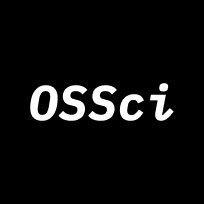The Map of Open Source
Science
The Project
MOSS is conceived as a comprehensive repository, mapping tools, people, papers, and data vital to scientific research.
The overarching goal of this system is to collect and integrate data from GitHub repositories, institutional websites, and scholarly APIs—such as OpenAlex, CrossRef, and Semantic Scholar—into a rich knowledge graph that captures the complex relationships among papers, people, institutions, repositories, research topics, and other objects. By analyzing large citation networks, repository interactions, and metadata from multiple sources, the system delivers an accurate, unified view of the open source and open research ecosystems.
Early Prototypes
First, here is how you interact with the map
Now here is a very small map with which you can practice.
To experience the much larger prototypes, please go here.
NOTE: These larger prototypes are very large, and very memory intensive. They are best experienced on a machine with at least 32gb of RAM. Even then, they may take up to 10 minutes to load.
Reach out to jon@numfocus.org to discuss mapping your ecosystem!
Our Users
-
Find and compare open source tools relevant to their research needs.
Connect with tool communities for support.
Find collaborative projects and user communities.
Discover complementary and cross-domain tools.
See which papers cite specific tools to understand their academic impact and utility in research.ription text goes here
-
Understand the impact of individuals, projects, and organizations they might support.
Allocate resources to those who make significant contributions to the open source ecosystem.
Direct funding to support maintenance and sustainability of open source tools.
Direct funding to empower people that serve as connecting nodes in the ecosystem.
Quickly evaluate the contributions of a potential grantee.
-
Identify relevant open source tools and their impact for integration into workflows.
Avoid duplicating effort and focus on unique contributions.
Identify valuable but abandoned tools that could benefit from corporate support.
Understand trends in development.
Identify potential hiring or collaboration candidates.
Identify home communities for internally developed open source software.
-
Identify gaps in the open source research software ecosystem.
Develop new tools to fill those gaps.
Navigate the repetition of features across different open source tools.
Avoid duplicating effort and focus on unique contributions.
Explore opportunities to reinvigorate abandoned or under-maintained tools.
Promote community involvement and collaboration on at-risk tools.
Communicate your business case to funders and supporters.
-
Highlight achievements of students and faculty in open source projects.
Streamline the grant submission process for researchers.
Identify projects produced by faculty and students.
Identify projects utilized by faculty and students.
Identify and support the open source community within your institution.
Evaluate the impact and contributions of hiring/tenure candidates.
-
Identify and use open source AI tools and frameworks relevant to their projects.
Connect and collaborate with developers and communities of specific AI tools for support and collaboration.
Track changes toAI tools to stay current with advancements.
Compare different AI tools and frameworks to choose the best fit for their needs.
Explore case studies and success stories of AI tool applications in various domains.
Identify and address gaps in open source AI tooling to drive innovation and development.
-
Identify tools in your software supply chain affected by security threats.
Explore potential alternative tools of similar functionality.
-
See contributions and connections of individuals and organizations.
Identify key contributors and organizations.
Map contributions across projects and explore collaborative networks.
Promote community involvement and collaboration on at-risk tools.
Attain self-awareness




